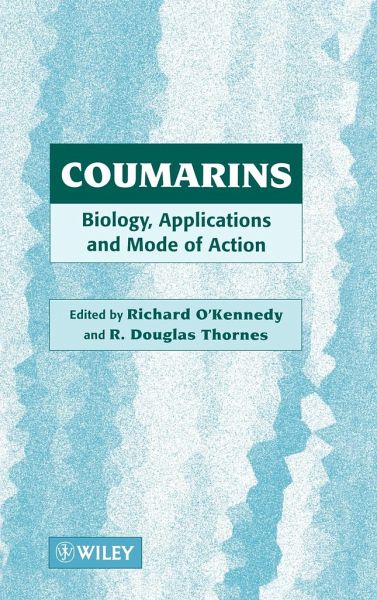
Coumarins
Biology, Applications and Mode of Action
Herausgegeben von O'Kennedy, Richard; Thornes, R. Douglas
Versandkostenfrei!
Versandfertig in über 4 Wochen
276,99 €
inkl. MwSt.

PAYBACK Punkte
138 °P sammeln!
Coumarins: Biology, Applications and Mode of Action predominantly focuses on the parent compound, coumarin, and its main metabolite in humans, 7-hydroxycoumarin. It describes in detail every facet of these compounds including history, toxicology, chemistry, metabolism, analysis, clinical, veterinary and other applications, their roles as immunomodulatory agents and speculates on their mode of action. Coumarins are a group of compounds that have important roles as food constituents; as anti-oxidants, stabilisers, and immunomodulatory substances; as fluorescent markers for use in analysis, in la...
Coumarins: Biology, Applications and Mode of Action predominantly focuses on the parent compound, coumarin, and its main metabolite in humans, 7-hydroxycoumarin. It describes in detail every facet of these compounds including history, toxicology, chemistry, metabolism, analysis, clinical, veterinary and other applications, their roles as immunomodulatory agents and speculates on their mode of action. Coumarins are a group of compounds that have important roles as food constituents; as anti-oxidants, stabilisers, and immunomodulatory substances; as fluorescent markers for use in analysis, in lasers and in clinical use. Coumarins: Biology, Applications and Mode of Action predominantly focuses on the parent compound, coumarin, and its main metabolite in humans, 7-hydroxycoumarin. It describes in detail every facet of these compounds including history, toxicology, chemistry, metabolism, analysis, clinical, veterinary and other applications, their roles as immunomodulatory agents and speculates on their mode of action. Features include:
New insights into mode of action of coumarins
Comprehensive summary of new coumarin compounds
Detailed accounts of methods used for analysis
Applications of coumarins for diverse methods of analysis
This volume will be of interest to those working in biochemistry, chemistry, pharmacology, clinical sciences and toxicology.
New insights into mode of action of coumarins
Comprehensive summary of new coumarin compounds
Detailed accounts of methods used for analysis
Applications of coumarins for diverse methods of analysis
This volume will be of interest to those working in biochemistry, chemistry, pharmacology, clinical sciences and toxicology.


